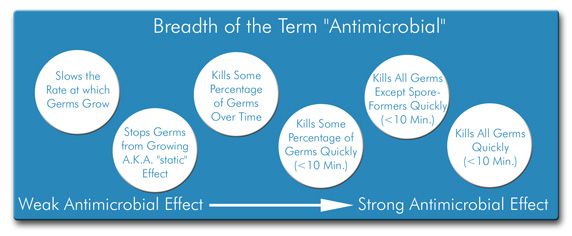TOPICS FOR TEST #3
1. BACTERIAL SHAPES & ARRANGEMENTS:
Name and describe major
Coccus (single)
Coccobacillus - (look oval )
Diplococci - (Two together)
Streptococci -(chain)
Staphlylococci - ( Cluster or group)
Sarcinaecocci (8 together)
Tetradcocci (4 together)
Bacillus - Single
Diplobacilli
Streptobacilli
Spirillum - (Spiral Shape)
Vibrio - Curve Baccillus
Spirochete - Like Snake (must be seen live)
Coccus (single)
Coccobacillus - (look oval )
Diplococci - (Two together)
Streptococci -(chain)
Staphlylococci - ( Cluster or group)
Sarcinaecocci (8 together)
Tetradcocci (4 together)
Bacillus - Single
Diplobacilli
Streptobacilli
Spirillum - (Spiral Shape)
Vibrio - Curve Baccillus
Spirochete - Like Snake (must be seen live)
a. Shapes used to identify Bacteria
b. Arrangements for Bacterial identification
2. DIFFERENTIAL STAINING
a. Describe and contrast Differential Staining with Simple Staining
- Differential Staining emphasizes bacterial diversity with color
- using 2 basic dyes with contrasting colors to stain bacteria differently.
- Differential staing is about Highlighting differences between bacteria
- Each Differential Staining procedure uses its unique pair of basic dyes.
- Differential staining results in positive / negative results .
- Most frequently used differential stains are
1. Gram Stain - to distinguis different kinds of bacteria
2. Acid-Fast stain - distinguishes Mycobacterium
- simple
Staining uses just one dye:( a basic dye ) it
highlights the specimen with color in contrast to a clear background.
- primary purpose is to highlight the entire microorganism so tht cellular shape and basic stucture are visible.
(Special Staining) is used to isolate specific parts of microorganisums... such as endospores and falgella and the presence of capsules..
- primary purpose is to highlight the entire microorganism so tht cellular shape and basic stucture are visible.
(Special Staining) is used to isolate specific parts of microorganisums... such as endospores and falgella and the presence of capsules..
b. Learn reagents and Chemical Groups of Dyes used
(pairs of Basic Dyes for diff. staining)
Crystal violet (purple) ---- Safranin (red) ------>(if primary Stains stays purple +)
Carbol Fuchsin ----------------------- Methylene Blue ------ used in acid fast staining
Malachite Green -------------------Safranin ----- used in endospore (spore) staning
c. Recall steps and what each step does to the cell
3. THE GRAM STAIN
a. List the steps and describe final results.
b. Identify Mordant, Decolorizer, Primary, and Counter stains
1. Primary die --- (colors everything)
1b. Apply MORDANT ----- it fixes the primary stain , not a dye,
1. Primary die --- (colors everything)
1b. Apply MORDANT ----- it fixes the primary stain , not a dye,
no color change
2. Deodorizers ----either Alcohol, Acitone, Acid
2. Deodorizers ----either Alcohol, Acitone, Acid
1. alcohol--> ethanol or proponal
2. Acetone ---(acetone + alcohol 1:1)
dehydrates cell,
never pure ...
3. Acid ------- (Acid 3% + Alcohol 97%),
deodorizes & "destroys",
usually not used too strong
dehydrates cell,
never pure ...
3. Acid ------- (Acid 3% + Alcohol 97%),
deodorizes & "destroys",
usually not used too strong
4. Water------ rarely used
3. Apply Counter Stain---- ( Safranin contrast for crystal violet )
3. Apply Counter Stain---- ( Safranin contrast for crystal violet )
c. Determine how specimens look after each step of Gram Stain
d. Review final results of Gram Stain
4. WHY GRAM STAIN?
Learn
the Explanations for Gram Reaction:
Peptidoglycan – consists of
repeating disaccharide attached to Polypeptides to form lattice
Peptidoglycan found in cell wall of “Eubacteria”
Prokaryotic cells - Archaea does not have peptidoglycan in cell
walls.
Gram positive = wall has
95% peptidoglycan -
Gran Negative = wall has
15% peptidoglycan + 80% outer membrane
Outer membrane – full of fat (Lipids) – Liproteins,
phospholipids,
lipopolysaccharide,
periplasmic space
Periplasmic Space
–(gap) which mean less material to stain – contains high levels of degradative
enzymes and transports proteins..
is the primary dye for
gram stain
It dyes both gram + and Gram –
Its retained by Gram + because wall has lots
95% of peptidoglycan
It is washed out from gram- because has only
15% peptidoglycan.
Result
Gram
+ purple (visible)
Gram
– (invisible – until you do counterstaining with safranin- turns pink red)
Components and Chemistry of
Bacterial Cell Wall
- Teichoic Acids – only in gram +
, attached to peptidoglycan only
- Lipoteichoic acids - only in gram + ,
attached to peptidoglycan and plasma membrane
- Basic Dyes
5. GRAM PROFILE AND COMPARISON OF GRAM POSITIVE
AND NEGATIVE BACTERIA IN TABLE 4.1, PAGE 87
a) Basal Bodies e) Phospholipids
b) Outer membrane f) Lipo-Polysaccharides
c) Lipid Content g) Types of Lipids
d) Flagella Structure h) Periplasm
6. EXOTOXINS
a) What are they and where do they come from?
b) Which microbes make them?
c) How Toxigenic are they and how do they work?
d) When can they be used for Immunological benefits?
7. FUNCTIONAL GROUPS OF EXOTOXINS
a) Identify the 3 Functional names of Exotoxins
b) Describe their properties and targets
8. STRUCTURAL TYPES OF EXOTOXINS
a) Name the 3 Structural Types of Exotoxins
b) Describe their properties and how they work
c) Explore specific examples and list Bacteria associated with each
d) Study the bacteria, Toxin, and Symptoms of Toxic Shock Syndrome
9. BACTERIAL ENDOTOXINS
a) Recall major properties of Bacterial Endotoxins
b) Compare their characteristics to Exotoxins
c) Describe Symptoms of Endotoxins and explain how they are provoked
10. BACTERIAL TOXIGENICITY
a) Define Toxigenicity?
b) Define bacterial Virulence and identify some virulence factors
c) Compare Properties and Toxigenicity for:
11. TOXOIDS
a) What are Toxoids?
b) Where do they come from and how are they formed?
c) Explain their clinical roles as vaccines
12. ANTI-TOXINS
a) What are Anti-toxins?
b) Where do they come from and how are they formed?
c) Explain their role in Immunity



